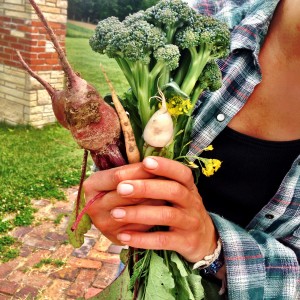For years now, everyone from beekeepers to scientists have been decrying the disappearance of honey bees.
We rely on these tiny creatures for hundreds of billions of dollars worth of our food—everything from strawberries to almonds.
What we must remember, however, is that this phenomenon is not only an economic concern. It is, after all, food we’re talking about. The disappearance of bees is a battle for our survival, as well.
Unfortunately, it’s not just bees that we are losing, but also birds, beetles, moths, wasps, bats, and butterflies. Scientists estimate that the existence of 35% of global food production consists of plants dependent on pollination. Unfortunately our toolbox of worker species looks increasingly sparse. If we do nothing, we face not an inconvenient situation, but a dangerous one.
The causes of pollinator declines appear to be many, but the majority seem linked to industrial agricultural practices. Cash crops cover every square inch of arable land in many areas, eliminating important pollinator habitat. The use of pesticides harms not just agricultural pests, but pollinators as well. Transporting pollinators such as bees thousands of miles from field to field, and from one growing season to the next around the U.S. promotes the spread of disease, and stresses the animals. In addition, invasive pathogens and parasites, some likely hailing from agricultural imports, are knocking out several important species (particularly among bees and bats).
Finally, climate change may soon be inflicting a larger toll. As the earth warms, it will change the flowering time of plants, and both plants and pollinators may shift territories at different rates in response to changing climatic conditions. When the flowers bloom, it is unclear whether pollinators will be there to do their job.
For years scientists, policy makers, farmers, beekeepers, naturalists, and food and agriculture corporation representatives have fought over the causes of pollinator declines. A look at the scientific literature, however, points to multiple issues at hand.
Why then, has nothing happened? Why, rather than shrinking at the possibility of a multi-faceted problem, we have not responded with multifaceted solutions?
As we point fingers and demand more studies, we fail to follow up on what we do know with concrete action. Meanwhile, life-giving species continue to disappear.
It’s time to do something. We are running out of time to prolong precautionary and preventive action. Decrease pesticide use, ban chemicals which may have a greater impact on pollinator populations than others, limit bee transportation distances, cut greenhouse gas emissions, reduce the contribution of agriculture to climate change, plant trees, allow natural habitat to regrow, invest in disease research, and educate children about the importance of pollinators.
At worst, we will have done something good for the environment. At best, we’ll be on our way to seriously saving the world.




